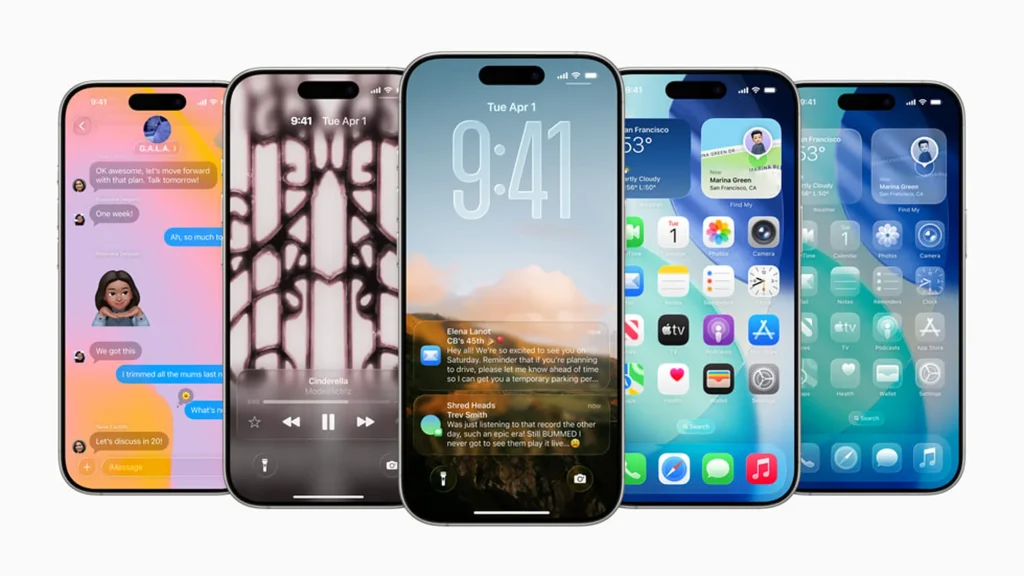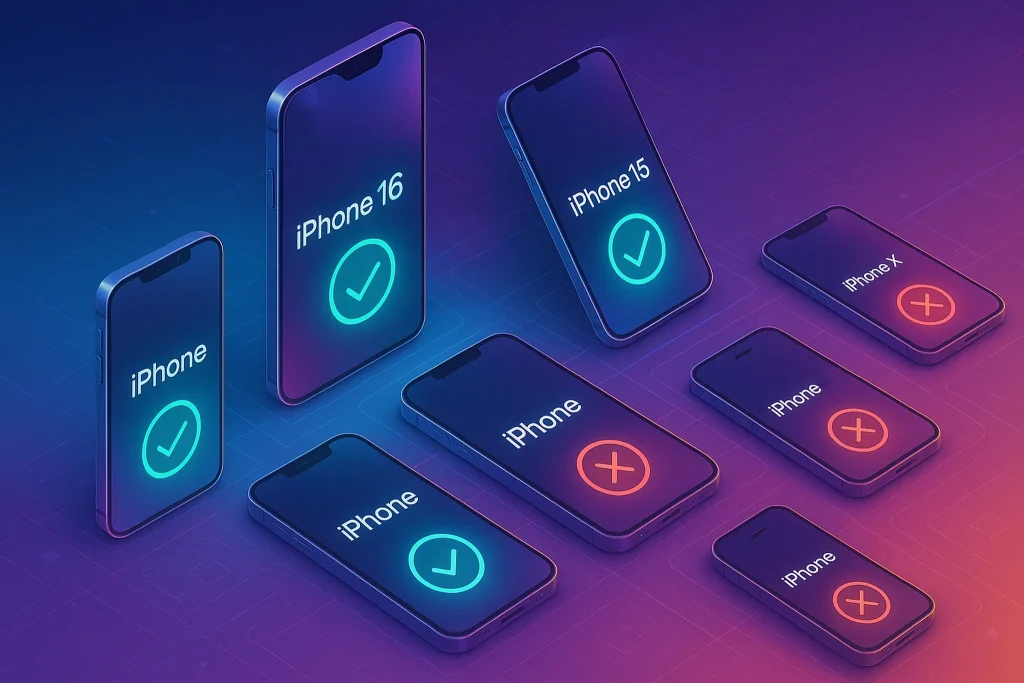-This post may contain affiliate links. If you click on one and make a purchase, I may earn a small commission at no extra cost to you.-
🌍 Intro: A Year That Rewired the Future
2024 wasn’t just another year in tech—it was a reset point. From powerful breakthroughs in artificial intelligence to major industry pivots, regulation surges, and climate-focused innovation, the tech world was on overdrive.
Governments finally caught up with AI. Companies shifted gears after failing bets. And the promise of space, gaming, and green cities came closer to reality. In this post, we recap the 10 most important tech stories of 2024 that are shaping how we live and build in 2025 and beyond.
🧾 1. AI Regulation Goes Global
2024 wasn’t just a year of AI innovation—it was the year regulation caught up. The European Union passed the EU AI Act, a landmark framework classifying AI systems by risk level. From real-time facial recognition to automated job screening, systems now had to pass transparency, data handling, and bias mitigation standards to be deployed legally.
But the ripple didn’t stop in Brussels. The U.S. introduced its own AI Bill of Rights principles, and while not yet legally binding, they pressured tech companies into voluntary compliance. Japan and South Korea began regulating biometric systems, and India launched a public consultation on AI ethics.
This shift forced both startups and Big Tech to rethink how they deploy models. High-risk AI is no longer “launch first, apologize later.” Developers must build with governance in mind, especially for tools touching finance, healthcare, or education.
We broke down this shift in AI Regulation on the Rise, where we explored what developers need to know about staying compliant in a world that now watches closely.
🚀 2. SpaceX Starship: Full Mission Success
For years, Starship was the “big if” in spaceflight. In 2024, SpaceX made history by completing the first fully successful orbital flight and controlled landing of the world’s most powerful rocket. Unlike earlier test flights, this mission demonstrated not only launch stability but also precise thermal shielding and booster recovery.
What makes this so significant isn’t just the rocket’s size—it’s the price tag. Starship is designed to be fully reusable, slashing the cost of launching cargo and people into orbit. That opens the door to low-cost satellite deployments, lunar logistics, and even Mars missions.
NASA, already partnered with SpaceX for the Artemis program, signaled stronger collaboration. Meanwhile, commercial space companies began adjusting timelines and investments, knowing the bar had officially been raised.
This wasn’t just a win for SpaceX—it marked the transition of space as industry, not just science fiction.
📉 3. The Final End of the Metaverse Hype
After peaking in 2021–22, the metaverse entered free fall in 2024. Meta’s pivot from metaverse R&D to AI investment was a clear signal that the hype had run out of steam. VR headset sales stagnated. Platforms like Decentraland saw daily user counts in the low hundreds.
Why the collapse? The technology still isn’t frictionless. Movement feels clunky, social adoption is low, and the value proposition—especially in enterprise use cases—never fully materialized.
Still, not everything died. Certain industrial and medical VR applications continued to grow. Virtual training tools saw modest but steady traction, particularly in aviation, healthcare, and manufacturing.
But for consumer tech, the verdict is clear: the metaverse was overbuilt, overhyped, and underdelivered. Our post The Metaverse Hype vs. Reality Check dives into what’s next for spatial tech—especially as AI takes the driver’s seat.
🧠 4. GPT-5 and Gemini Ultra Redefine the AI Race
2024 was the year of LLM supremacy. While OpenAI released GPT-5 with more multimodal capabilities (especially in vision + text tasks), it was Google’s Gemini Ultra that turned heads. Unlike earlier models that simply predicted text, Gemini Ultra introduced more refined reasoning, planning, and tool use.
The model integrated deeply into Google Workspace, Android, and Search. This wasn’t just an assistant—it was an embedded layer of intelligence. Users could generate custom reports, manipulate spreadsheets, analyze code, and even simulate business outcomes—all via a prompt.
The biggest difference? Latency and context handling. Gemini Ultra could process longer inputs with faster response, and its integration into real-world tools made it far more practical than chatbot-style models.
We explored how Gemini reshaped the AI landscape in Google’s Gemini AI Just Leveled Up, and why it might just be the most strategic product Google has shipped since Android.
🧬 5. AI in Healthcare Goes Mainstream
After years of cautious trials, 2024 was the breakout year for AI in medicine. The FDA gave full approval to diagnostic tools using AI for breast cancer screening, heart rhythm prediction, and diabetic retinopathy. These weren’t “pilot programs”—they entered real clinical workflows across the U.S.
Amazon Health, through its acquisition of One Medical and new AI integrations, began offering triage tools and symptom checkers as part of its patient onboarding system. Imagine an intelligent agent asking you questions and routing you to the right care level—even prescribing medication, in some jurisdictions.
Startups like Aidoc, Viz.ai, and Tempus saw record valuations as hospitals adopted AI imaging solutions that reduced ER wait times and improved diagnostic accuracy.
This wasn’t just about novelty. It was about scaling limited medical personnel, especially in underserved regions.
📉 6. Semiconductor Cold War Heats Up
In 2024, the global battle for chip sovereignty intensified. What began as a supply chain bottleneck in the pandemic evolved into a full-blown geopolitical race.
The U.S. doubled down on the CHIPS Act, injecting new capital into domestic fabs operated by Intel, TSMC Arizona, and GlobalFoundries. Japan and the EU followed suit, rolling out subsidy programs and fast-track permits for semiconductor plants.
Meanwhile, China’s SMIC claimed progress on 5nm chips using legacy equipment—a strategic workaround to evade U.S. export bans. This move hinted that while Western nations control cutting-edge lithography (like ASML’s EUV tech), China is finding low-tech ways to catch up.
The result? The chip landscape is no longer just about innovation—it’s a matter of national security and economic resilience. In Global Chip Shortage Update: Are Supply Chains Back to Normal?, we examined what’s working, where gaps remain, and why 2025 might be even more pivotal.
🔐 7. Major Cybersecurity Breaches
In one of the most disturbing trends of 2024, enterprise cloud infrastructure became a prime target for cyberattacks. Microsoft’s Azure cloud suffered a breach affecting tens of thousands of government and enterprise accounts. Cloudflare disclosed a zero-day exploit that went undetected for weeks.
These weren’t isolated events. They exposed systemic risks in how cloud providers manage identity access, encryption keys, and container isolation. For SaaS companies, it was a wake-up call: defaulting to shared cloud security is no longer enough.
Governments responded swiftly. The EU announced CSCC (Cloud Security Compliance Certification), while U.S. agencies revised NIST frameworks to recommend mandatory zero-trust architectures and active telemetry-based defense.
As we discussed in Cybersecurity in 2025: What You Must Know, these attacks aren’t just data losses—they’re operational threats. Whether you’re hosting a CRM tool or medical records, security architecture now defines product viability.
📲 8. Apple Vision Pro: A Polarizing Debut
After years of teasing and delays, Apple’s Vision Pro finally launched in 2024—but the reaction was far from uniform. Some early adopters hailed it as a revolution in spatial computing, praising the gesture-based control system, crisp micro-OLED display, and immersive media experience.
Yet many users and reviewers highlighted the awkward physical design, short battery life, and high cost ($3,499+) as major barriers. Developers were intrigued but cautious, with most apps offering novelty rather than necessity.
What’s clear is this: Vision Pro is not an iPhone moment—yet. But it might be laying the foundation for the next computing paradigm shift.
We explored these dynamics in Apple Vision Pro Review: The First True Spatial Computer?, and why the next few iterations will decide whether spatial computing becomes a niche, or the next UX frontier.
⚡ 9. Green Tech Boom
2024 was the turning point for climate tech—not just in rhetoric but in results. Global investment in green startups surpassed $70B, with VC giants and sovereign wealth funds backing innovations in battery storage, water purification, solar AI optimization, and carbon marketplaces.
Cities began deploying real-time environmental sensors. AI-powered systems optimized everything from street lighting to irrigation in arid regions. Europe introduced new mandates requiring digital product passports, driving transparency in material sourcing and sustainability scoring.
Green cloud providers like Google Cloud with carbon-aware workload scheduling, and startups like Watershed, gained significant enterprise traction as sustainability moved from marketing buzz to procurement requirement.
We explored these moves in Green Tech Innovations: How Tech is Tackling Climate Change in 2025. For founders, engineers, and CIOs—2024 proved that climate isn’t a vertical anymore. It’s horizontal.
🕹️ 10. Gaming Tech: AI NPCs, Cloud Dominance
Gaming has always pushed technical boundaries—but in 2024, it became a case study in real-time AI integration. Titles like Eclipse Protocol and Starfire Ascent introduced LLM-powered NPCs that remembered past interactions, adapted to player behavior, and even generated new quests on the fly.
Meanwhile, cloud gaming saw its first profitable year, with over 200 million MAUs across platforms like Xbox Cloud, NVIDIA GeForce Now, and Tencent’s InstantPlay. Even indie developers began using cloud-native engines that reduced hardware constraints, letting players on budget phones access AAA experiences.
More importantly, gamers began expecting personalized, AI-assisted gameplay, with intelligent hint systems, AI co-op companions, and even narrative shaping based on sentiment analysis.
In our analysis How AI is Changing Video Game Design, we explored how developers can integrate these tools without breaking immersion. And in The Rise of Cloud Gaming, we examined how business models are shifting from downloads to dynamic, scalable access.
🧠 Nerd Verdict
If you only read one recap of 2024’s tech stories—this should be it. These 10 headlines weren’t just blips. They marked paradigm shifts across industries.
From the normalization of AI in healthcare and law, to the end of some long-hyped dreams like the metaverse, 2024 redefined how innovation is funded, regulated, and integrated. The lesson? The future of technology isn’t just about speed—it’s about alignment with reality, ethics, and sustainability.
❓ FAQ: Nerds Ask, We Answer
💬 Would You Bite?
Which story from 2024 do you think will matter most in five years? Or is there a headline you think we overlooked?
Jump into the comments and let’s debate 👇



